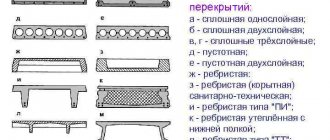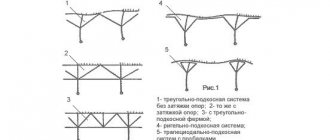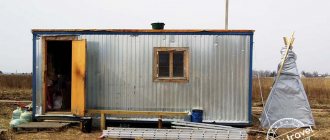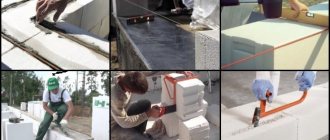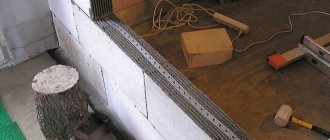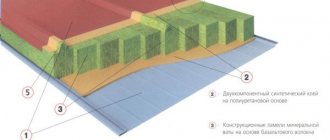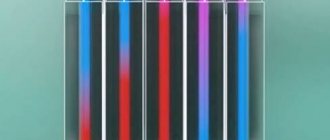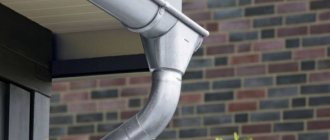Steel sheets that reliably imitate classical roofing ceramics in appearance are in high demand in the field of roofing. Lightness, priority dimensions that allow you to quickly cover large areas, a rich range of colors - qualities that are very attractive both for builders and for owners of low-rise buildings.
A significant addition to the technical and technological advantages is the cost of the material, which can significantly reduce the construction budget. However, not everyone is still familiar with this type of roofing that is so popular today. It will be useful for them to know what metal tiles are, how they are produced, and what their advantages are based on.
Features of metal tile production
They produce a type of roofing that is in demand on the market from cold-rolled sheet steel, the thickness of which is on average 0.5 mm. In order to give it a spectacular relief, repeating the waves and steps of a tiled roof, the sheets are driven through a rolling molding mill.
Molding not only gives the roofing sheet a respectable appearance, but also increases its spatial rigidity, as well as its ability to resist external mechanical influences and loads. In fact, this type of roofing refers to steel profiled sheets. But unlike corrugated sheeting, in addition to longitudinal ridges, metal tiles also have transverse folds.
The distance between the transverse folds depends on the type of material; in most cases it is 35 cm. This indicator must be taken into account in the construction of the sheathing for laying the covering. After all, the fasteners must be installed under the longitudinal convexity, and not as when laying corrugated sheets, where it is rational and convenient.
Resistance to atmospheric negativity, chemical and biological influences is ensured by multi-stage protection of roofing sheet. Its first step is hot treatment with zinc or aluminum zinc.
The layers are applied directly to the formed sheets on both sides. For high-quality roofing sheets, at least 270 g of galvanization is applied to every 1 m2.
Since the galvanization itself, which provides protection, is not very resistant to external influences and tends to interact with air molecules and “weather” naturally, a polymer layer is placed on top of it. It protects the galvanization from destruction and paints the coating in a variety of colors.
Let's look at the types of coating used, see what their differences are and how the properties of the protective and decorative shell affect the selection of material for the roof.
Scope of application of metal tiles
Over the past decades, metal tiles have taken a strong position among roofing materials. The variety of design execution and richness of color shades made it possible to apply bold conceptual solutions, which had a positive effect on the forms and complexity of modern projects.
This roofing material has become widespread due to the vast area of its application - metal tiles are ideal for low-rise construction. However, for all its advantages, it also has a number of disadvantages, so let’s get straight to the specifics:
- Susceptibility to corrosion. Still, most often the base is not “non-ferrous”, but simple metal - this is much cheaper.
- Low material rigidity. The reason is the constant race to lose weight. However, the leading factor is still savings. This encourages the use of minimal sheet thickness.
- High percentage of waste. The disadvantage is felt on complex roofs, but is partially compensated by the skill of the roofer.
- Low noise absorption threshold (the roof drums when it rains).
- Poor snow retention.
- Severe overheating in the sun.
The latest disadvantages of metal tiles fall more into the “far-fetched” category, although only three are listed, but this can go on for a long time.
And yet, the list of advantages that a roof covered with this material has has made it possible to use metal tiles for many different design solutions - the main ones are:
- Simplicity of installation involves the complete elimination of complex preparatory stages, which has a positive effect on the timing of the work.
- The material has enviable resistance to environmental conditions, which determines its long service life.
This quality extends to all the constituent elements of such a roof, including additional ones. Deliberately excluding the possibility of frequent repairs. Quality is also valuable for the use of metal tiles in various climatic conditions.
Polymer coatings used to treat the surface of a material make it possible not only to provide it with protective properties, but also to acquire a variety of color shades. A large selection of textures offered by manufacturers will allow you to give your home a unique shape.
The environmental friendliness of the material and its affordable price complete the list of arguments in favor of metal tiles.
Choice of polymer coating
All types of external protective and decorative coatings for corrugated steel roofing are made from polymer compounds. The composition of polymer shells is different, since they have to solve different problems and work under different operating conditions.
PE – polyester
Decorative and protective shell created on the basis of polyester dye. Among its significant advantages are a wide range of colors, excellent resistance to UV irradiation, and the ability to retain the original color significantly longer than the warranty period announced by the manufacturer.
Metal tile roofing, made of material with a polyester shell, can be installed in all latitudes of our country. It can withstand frosts of -60° and does not lose performance at +120°C. In addition, it attracts with its affordable price, thanks to which it is actively in demand in both private and commercial construction.
However, during the installation process, the polymer coating must be treated with extreme caution, because it is applied in a layer of only 25 microns, and 5 microns of this layer is a primer laid on the metal sheet. Accidentally scratching such a thin shell is easier than it might seem at first glance. Therefore, it is better to carry out installation work without removing the polyethylene applied to the outside.
PEMA – matte polyester
Product developed on the basis of regular polyester. When applying this type of coating, its scales are applied in different directions, so that the visual effect is formed in an unusual and very interesting way. As a result, the shell of metal sheets has absolutely no shine or glare.
A specific technology allows you to optically “deepen” the color and give it a certain noble velvety quality. Metal tiles with a matte polymer coating are more similar to natural building ceramics, which justifies its popularity.
Roofing with matte polyester is more expensive than the previous version. The protective and decorative PEMA shell is applied in a layer of 35 microns, and a primer is also used. This coating is more difficult to damage during installation.
PVC (PVC) - polyvinyl chloride or plastisol
One of the most visually impressive coatings, it gives the surface not only a pleasant color, but also forms a relief that imitates the texture of natural materials. The application layer reaches 200 microns, which is why this type of shell resists mechanical stress best of all.
Thanks to the composition and thickness of the polymer protection, the roof is not afraid of atmospheric influences, acid rain, dusty winds, and is not threatened by corrosion.
True, this option also has disadvantages - PVC does not retain color very well under sunlight. Taking into account this disadvantage, in the southern regions it is recommended to prefer light-colored material for roofing.
Pural - pural
This is polyurethane enriched with polyamide. Each of the components of a complex polymer compound solves its own problems. The introduction of polyamide significantly increases resistance to mechanical stress and copes with its duties excellently, despite the fact that the total thickness of this shell is less than PVC, being only 50 microns.
Polyurethane is responsible for maintaining the original color, which is highly resistant to UV radiation. Roofing with pural protection of any color can be installed in the south of the country; it works perfectly at +120°C.
At the moment, this is the most popular material, sold at an affordable price and pleasing with impeccable performance qualities.
Armacor - armakor
In terms of technical and physical-mechanical characteristics, armacore is very similar to pural, although it is inferior to it in terms of corrosion resistance. To increase it, a thicker layer of primer is applied to the metal surface. Metal tiles with this protective shell are preferred in settlements on the sea coast.
To ensure color stability, polyurethane is added to the coating, which ultimately allows the material to be used in southern latitudes. The same component provides resistance to various chemical influences: all kinds of acid rain, which often falls in industrial areas.
PUR – thick layer polyester
This is polyester, which contains polyamide. The thick polyester shell is less resistant to sunlight and precipitation typical of industrial regions, despite the fact that it is applied in a layer of up to 48 microns.
In addition, spots of rust will appear on it earlier if a house with such a roof is built next to a chemical plant, and it fades much faster than pural.
PVDF – polyvinyl dente fluoride
Also a complex polymer compound, modified with acrylic to improve technical properties. Smooth and pleasant to the touch, the shell comes in both glossy and matte.
The assortment of roofing with the specified decorative protection includes the most extensive range of colorful solutions. The use of multi-layer application technology and the use of varnishes allows you to achieve a very original effect. Metal tiles with PVDF coating very accurately imitate aluminum, bronze and gold.
The disadvantages quite rightly include insufficient mechanical strength, which is associated with the insignificant thickness of the decorative protective layer. It is only 27 microns. But this roof copes perfectly with rusting and fading.
Metal tiles with PVDF or PVD 2F will not be harmed by acid precipitation, exhaust gases and fumes from coal processing boilers. The outer shell perfectly prevents the impact of alkalis and salts on the steel base. This is the best choice for furnishing urban buildings.
In addition to the long-known and fairly popular protective and decorative shells of steel roofing sheets, manufacturers regularly offer new options. For obvious reasons, the formulas are hidden, as are the production technologies.
When selecting material for a roof, in addition to external indicators, it is necessary to take into account the type of polymer used in the manufacture and the dimensions of the sheets presented for sale.
What to consider when choosing metal tiles
For example, for temporary shelter of a building, it is better to give preference to glossy metal tiles (polyester) - this is the most economical option, and also has fairly good properties for its cost and service life. For the roof of a private house or industrial buildings, it would be more advisable to choose the option pural, polydifluoride or plastisol. They are more expensive, but will last much longer and will retain their beautiful appearance until the end. There are different types of polymers on the construction market - you will quickly find something that suits you both in quality and cost.
Thickness and weight of material
You should also pay attention to this - not only the quality of the future roof, but also the correct installation of metal tiles depends on this. The optimal sheet weight is up to 5.5 kg per square meter. If it is more, then it is necessary to take into account the fact that it will be much more difficult to work with it. There will also be a significant load on the rafter system, and it will have to be further strengthened. If the optimal weight is chosen, then two people can handle the installation.
Important: when cutting metal tiles, you cannot use a grinder or other cutting tools that will damage or even completely destroy the protective layers of the sheet.
Experts recommend choosing sheets of metal tiles that are not too thin. It's longer
protects it from rust and deformation, and is also not so easy to scratch. The optimal thickness is 0.45 mm.
Material color characteristics
The color palette of metal tiles is incredibly diverse - there are more than 50 shades. The most popular colors of the material are burgundy and brown. Often preference is given to green and blue. It should be remembered that dark shades can quickly fade in the sun. But there is one nuance here - if the material is of high quality, then it will lighten evenly over the entire surface. If the quality is not very good, then fading will begin with the appearance of individual light spots on the sheets, which will slightly spoil the overall appearance of the roof. This suggests that the polymer layer of the material was initially of poor quality - if the warranty is valid, then you can easily contact the manufacturer to resolve this issue.
Metal tile supply format
Metal relief roofing is supplied to the buyer either in the form of sheets with a given length, or in the format of elements cut to the size of the customer. Standard measured lengths vary from 0.4 to 3.55 m. Custom-cut sheets are equal to the length of the slopes plus an overlap on the eaves overhang and a five- to seven-centimeter overhang behind the eaves edge.
The width of the material depends on the manufacturer, usually it varies from 1.15 to 1.20 m. Moreover, the technical documentation always indicates two values: the actual or real width and the useful, also known as working width.
In construction markets in our country, sheets with a useful width of 1.11 m are most often sold. It is this value that is used in the calculations. In order to purchase the required number of sheets, the width of the roof along the eaves or along the ridge is divided by the usable width, the result is rounded up.
Why indicate two widths in the passport? The fact is that metal roofing sheets are laid with an overlap along the side edge, equal to one wave of the tile.
The edge of the adjacent sheet placed on top provides sufficient pressure for normal service, prevents tearing by the wind, and protects against leaks.
Under the overlap there is also a capillary edge designed to drain condensate. Along it, the sheets are fastened to each other and to the sheathing. Along this line, fasteners are placed under each step of the tiled relief. The sheet itself is fastened, placing 12 - 14 points in a checkerboard pattern, but each should be strictly under the step.
Installation
Installation of metal tiles is possible on roofs with a slope from 12 to 90 degrees. The minimum is due to the accumulation of precipitation on flat structures. The material is suitable for both repairing roofs and constructing new ones. Laying is carried out from the ridge. The blocks are shifted in a checkerboard sequence.
The metal tile roof hides the sheathing inside. Its correct installation is the key to the quality of the roof. The sheathing under the metal tiles is mounted so that there is an air cushion between the wooden structures and the metal sheets. This eliminates the accumulation of condensation and, as a result, damage to the roof. Excess moisture disappears.
The pitch of the sheathing boards is usually 7-8 centimeters. The exact indicator depends on the width of the span between the rafters. Usually a 3 and 10 centimeter board is placed under the metal tiles. This is enough to withstand not only a regular coating, but also one with stone chips.
Installation of metal roofing
At the same time, the sheathing can withstand the pressure of snow and ice. It is important to calibrate the boards. Deviations in width should not exceed 3 millimeters. Otherwise, there will be no straight line for the slope of the tiles.
According to the structure, the lathing for metal tiles can be:
- sparse, used for roofs with a slope of more than 20 degrees and assuming a distance between the center of the boards equal to the wavelength
- continuous, mounted for roofs with a slope of up to 20 degrees, requiring a technological gap of 2-3 centimeters
- combined, where solid is used at the joints of the main roof with pipes, walls, stairs, snow catchers
The continuous sheathing in the combined scheme also covers roof hatches and roof windows. The place under the roof ridge is also being strengthened. There are 2 additional boards attached. They are fixed at a distance of about 3 centimeters.
Each sheet of metal tile is attached to the sheathing at several points. Anodized nails serve as fasteners. They are covered with an oxide film that prevents the destructive effect of the environment. Anodic polarization is carried out in a conducting medium.
Nails also secure the tiles at the eaves, at the ends, in places where they overlap. The sheets of metal are joined together using the locking method. If roofing tiles are installed, the nails are massaged.
Metal roofing composition
Glue is applied to the caps and stone chips are poured to match the color of the roof. Nail heads, which are often replaced with self-tapping screws, should be wide. Otherwise, there is a risk of sinking into the metal.
When fastening the tiles, you need to step on them in places where they rest on the sheathing. Otherwise, there is a risk of deformation and bending of the roofing material. For additional protection, installers work in light shoes with soft soles.
There are also weather requirements for installation. Work is carried out down to -10 degrees. In positive temperatures you can install up to 30 Celsius. This is indicated in the instructions that bona fide suppliers accompany the product. The papers outline not only the plan for laying the tiles, but also the requirements for preliminary preparation. The latter includes, for example, the need for grounding.
3-5 days before installation, the metal tiles are placed in a pallet. Its area should exceed lisit. Every few panels are separated by wooden blocks. It turns out to be a kind of sandwich. The bars are placed carefully so as not to scratch the tile coating.
Metal tile colors
Lying in a pallet, the metal sheets straighten under their own weight. During delivery and storage, deflections may occur. They need to be straightened out. Only after this the products are cut in accordance with the dimensions of the roof. Metal shavings are carefully swept away. This eliminates the risk of scratching the working surfaces.
Some people cut metal tiles with a grinder. This is dangerous. Ideally, you need metal scissors. 2-3 months after delivery of the object, it is advisable to check the fasteners, tightening the loose ones.
Features of metal roofing
All manufacturers of the now popular metal tiles produce all types of additional elements for laying and arranging the roof. The range includes not only cornice and gable strips, ridges, valleys, abutment strips, but also self-tapping screws with sealing washers, and linear seals that clearly follow the shape of the relief roof.
Installing extensions gives the roof a curtained look, covers the convex and concave ribs of the roof, masks unattractive cuts around the roof penetrations, and prevents the penetration of atmospheric water and dust under the covering.
Let’s immediately make a reservation that when installing a metal tile roof, waterproofing is mandatory. The reason for this is the virtually inevitable formation of condensate, the removal of which requires the installation of ventilation ducts.
A metal roof quickly heats up under the sun's rays and cools down just as quickly in the evening. Due to these temperature changes, water settles on the inside of the steel coating, which contributes to the appearance of rust and the emergence of fungal colonies.
In a well-designed roofing structure, metal sheets are separated from the insulated and non-insulated systems by a counter-bar - a remote functional lathing. Simply put, waterproofing, a membrane or simple polyethylene is laid on the rafters, this layer is fixed with the first row of laths.
But on top of the block that holds the waterproofing, a sparse sheathing is built, the pitch of which should correspond to the distance between adjacent waves of metal tiles. Along with the fixing function, the counter-lattice, in tandem with the lathing, forms channels and vents through which condensate is drained from under the roof.
Reinforced polyethylene or a vapor-proof polymer membrane are suitable for waterproofing cold roofs with metal tiles. Despite the presence of the distance created by the bar, roofing felt, roofing felt and new types of waterproofing containing bitumen cannot be used in schemes with this material. Direct contact with them is strictly prohibited.
In insulated roofs constructed for attics, the waterproofing layer is made with a vapor-permeable membrane. It does not allow atmospheric water to penetrate into the thickness of the insulation, but allows condensation and household fumes to escape freely.
Where is it used and what is its peculiarity?
This material has long established itself as one of the best for roofing. Suitable for both private construction and public buildings. It is also used to cover high-rise buildings. Metal tiles are in demand not only for new buildings, but also as a restoration material. For example, it is widely used in the repair of old roofs covered with roofing felt. In this case, the old coating is not removed, but can act as waterproofing. A large selection of colors and textures will allow you to choose covers to suit every taste.
Important: metal tiles can be used if the slope of the slope is less than 14 degrees.
When choosing metal tiles, private owners are sometimes lost - there are many types, but which one is best is difficult for a non-professional to determine. In fact, everything is much simpler than it seems. All options have good technical performance and are created on high-quality equipment. The only difference is in the characteristics and price. Experts recommend choosing based on where the material will be used, in what climatic conditions, and how aggressive the external environment is.
Scope of application of metal sheet tiles
Sheet metal tiles are used mainly in private construction for finishing the roofs of houses, non-residential buildings and premises. The scope of application of sheets allows them to be used not only for their intended purpose. They are often used to construct fences that have a beautiful appearance.
Its use is limited to covering broken and domed roofs. Metal sheet shingles are not as flexible a material as soft roofing tiles. Therefore, when constructing such complex shapes, up to 50% of the material can go to the remainder. A flat roof also does not allow the use of metal tiles. Due to the low slope, precipitation will be retained on it, which will shorten its service life; it will begin to leak after 3-4 seasons.
The following types of roofs are suitable for installing sheet metal tiles:
Metal tiles are a good option for covering the roof of bathhouses, terraces, gazebos and canopies for recreation, and outbuildings.
Permissible roof slope for metal tiles
The material can be used for roofing with a slope of at least 14–15°. Otherwise, snow will linger on it and leaks will quickly form. Recommended temperature range from -50 to +50ºС. At higher and lower temperatures, the material begins to lose its characteristics faster.
When using metal tiles in regions with difficult weather conditions, it is necessary to follow special installation technologies and additional measures to protect and care for the roof.
What types of metal tiles exist and their descriptions
Types of metal roof tiles are classified according to the cut shape and profile.
The shape of the cutting determines the ease of its installation:
- Sheet - made in the form of a canvas with a length of 0.5 m to 8 m and a width of 1.18 m. Suitable for roofing large areas and the usual gable and single-pitch shapes. This form of cutting is the most popular and cheapest. Fastening method: self-tapping screws with seals.
- Modular - made in the form of short stamped sheets up to 1.2 meters wide and up to 1 meter long. The fastening method is a hidden “lock”.
- Piece - in the form of individual tiles, repeating the shape of natural tiles. The fastening method is a special hidden “lock”.
Metal tiles also differ in profile - the shape of the stamping used . The name of the profile often corresponds to the brand in which it was first used:
- “Andalusia” (symmetrical type of coverage) – in cross-section, the wave profile has a mirror-symmetrical rise and fall;
- “Monterrey” (asymmetrical wavy) - the descent of the wave is shorter and steeper than the rise, and therefore the profile resembles a sea wave running onto the shore;
- “Banga” (With a high wave profile) – profile height 660 mm – more than that of “Monterrey”
- “Modern” - an asymmetrical wave profile made in the form of flat edges;
- “Cascade” (trapezoidal) – in cross-section, the profile wave resembles a trapezoid.
Types of metal tiles: photos and characteristics

